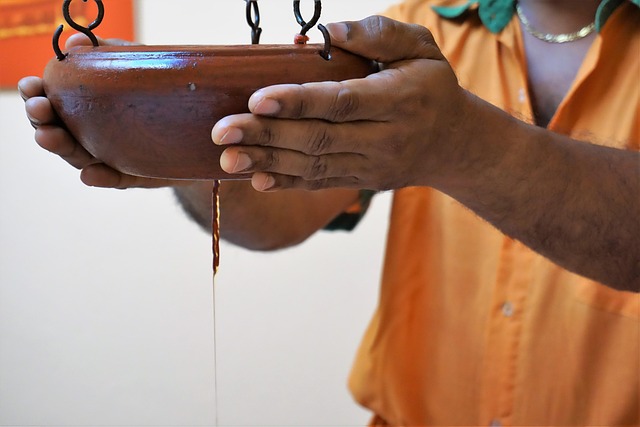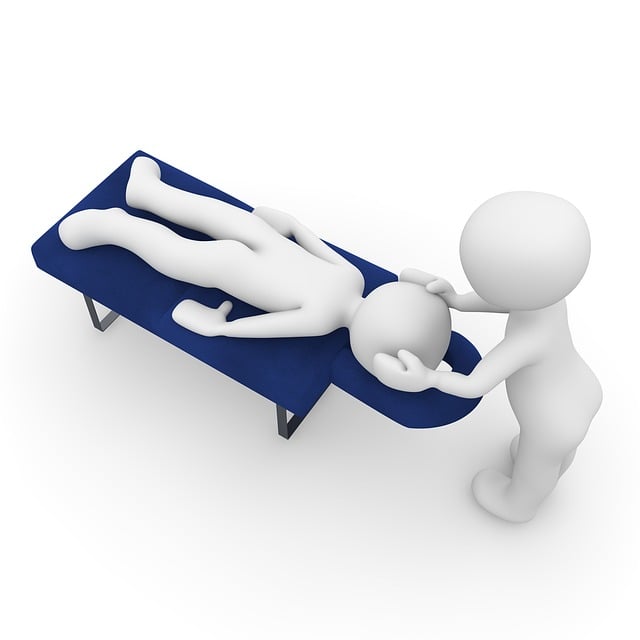Unleashing Joint Health: PRP Therapy’s Personalized Assessment Journey

PRP therapy for joints is a cutting-edge, non-invasive treatment using platelet-rich plasma derived…….
Introduction
Joint pain is a pervasive issue that affects millions worldwide, limiting mobility, reducing quality of life, and incurring substantial healthcare costs. Therapies for joint pain relief encompass a wide array of treatments aimed at alleviating discomfort, improving function, and enhancing the overall well-being of individuals suffering from joint conditions. This comprehensive article will delve into the various therapies available, their effectiveness, and the latest advancements in this field. Readers will gain a deeper understanding of how these therapies can be integrated into treatment plans for joint pain relief, supported by evidence-based research and real-world examples.
Understanding Therapies for Joint Pain Relief
Therapies for joint pain relief are multifaceted, including pharmacological interventions, physical therapies, alternative medicine practices, and surgical options. The core components of these therapies are designed to address the underlying causes of joint pain, such as inflammation, degeneration, or injury. Historically, treatments have evolved from conservative methods like rest and ice to more advanced procedures including joint replacement surgery. Understanding the significance of these therapies lies in their ability to improve patient outcomes by reducing pain, improving mobility, and promoting overall health.
Global Impact and Trends
The global impact of joint pain therapies is profound, with a growing elderly population and an increase in lifestyle-related conditions like osteoarthritis and rheumatoid arthritis driving demand for effective treatments. Key trends shaping the trajectory of these therapies include personalized medicine, the integration of digital health technologies, and a shift towards non-pharmacological interventions. Different regions of the world are affected differently by joint pain conditions; for instance, developed countries often have higher rates of osteoarthritis due to longer life expectancies, while developing countries may face challenges in accessing modern treatments.
Economic Considerations
From a economic standpoint, therapies for joint pain relief represent a significant market with substantial investment across pharmaceutical, medical device, and healthcare service sectors. The economic dynamics of this market are influenced by factors such as healthcare policies, insurance coverage, and the cost-effectiveness of treatments. In many countries, “Therapies for Joint Pain Relief” play a crucial role in healthcare systems by reducing long-term care costs and improving patient productivity.
Technological Advancements
The field of joint pain therapies has seen significant technological advancements that have transformed patient care. Innovations such as biologic drugs, advanced imaging techniques, and wearable monitoring devices have improved diagnostic accuracy and treatment efficacy. Additionally, the development of 3D-printed prosthetics and implants, robotic surgery, and artificial intelligence-driven personalized medicine hold great promise for the future of joint pain relief.
Policy and Regulation
The policies, regulations, and legislative frameworks governing therapies for joint pain relief are complex and vary by region. These frameworks ensure patient safety, ethical standards in research, and equitable access to treatments. The Food and Drug Administration (FDA) in the United States, the European Medicines Agency (EMA), and other regulatory bodies worldwide play pivotal roles in approving new therapies and maintaining high standards for patient care.
Challenges and Criticisms
Despite advancements, “Therapies for Joint Pain Relief” face significant challenges, including the management of side effects, addressing the opioid crisis, and ensuring equitable access to care. Criticisms often highlight the need for more research into long-term outcomes, the integration of complementary therapies, and the development of more cost-effective solutions. Proactive strategies to overcome these issues involve interdisciplinary collaboration, investment in research, and policy reforms that focus on patient-centered care.
Case Studies
Several case studies exemplify successful applications of joint pain therapies. One such example is the use of hyaluronic acid injections for knee osteoarthritis, which has shown to significantly improve pain and function. Another case study involves the implementation of a multidisciplinary approach to treating rheumatoid arthritis, combining medication with physical therapy, dietary changes, and stress management techniques. These studies underscore the importance of individualized treatment plans and the potential for improved patient outcomes.
Future Prospects
The future outlook for therapies for joint pain relief is promising, with potential growth areas in regenerative medicine, gene therapy, and advanced rehabilitation technologies. Emerging trends indicate a continued shift towards non-invasive treatments and personalized care plans. Strategic considerations for the future must focus on innovative research, addressing accessibility issues, and integrating new technologies into clinical practice to enhance patient experiences and outcomes.
Conclusion
In conclusion, therapies for joint pain relief are integral to improving the lives of those affected by joint conditions. Through a combination of pharmacological, physical, and alternative treatments, patients can find relief from pain and regain mobility. The future of this field is bright, with ongoing research and technological advancements poised to offer even more effective solutions. It is imperative that healthcare systems adapt to these changes to ensure the best possible care for those in need.
FAQ Section
What are the most common therapies for joint pain relief?
The most common therapies include pharmacological treatments (e.g., NSAIDs, corticosteroids), physical therapy, alternative medicine practices (e.g., acupuncture, chiropractic care), and surgical options (e.g., joint replacement).
How do technological advancements impact joint pain therapies?
Technological advancements have led to more precise diagnostics, personalized treatment plans, and improved surgical outcomes. Wearable technology can monitor patient progress, and AI can help tailor treatments to individual needs.
What are some challenges in the field of joint pain therapies?
Challenges include managing side effects from pharmacological treatments, addressing the opioid crisis, ensuring equitable access to care, and integrating complementary therapies into conventional treatment plans.
Can you provide an example of a successful case study in joint pain therapy?
Certainly. One example is the use of hyaluronic acid injections for knee osteoarthritis, which has shown to significantly improve pain and function, allowing patients to engage more fully in their daily activities.
What are some future prospects for therapies for joint pain relief?
Future prospects include advancements in regenerative medicine, such as stem cell therapy, gene therapy, and personalized rehabilitation technologies that can provide targeted treatment and improved outcomes for patients with joint pain conditions.

PRP therapy for joints is a cutting-edge, non-invasive treatment using platelet-rich plasma derived…….

Anti-inflammatory joint treatments have seen significant advancements, combining modern medications…….

Joint discomfort due to injuries, arthritis, or overuse can significantly impact daily life. Heat an…….

Joint pain management benefits from a diverse range of modern and natural approaches. Physical thera…….

Joint function deteriorates over time, leading to reduced mobility, increased pain, and decreased qu…….

Joint pain, caused by complex structures like bones, cartilage, ligaments, and tendons, can be treat…….

Joint pain no longer needs to hinder active lifestyles, thanks to advanced therapies for joint pain…….

Joint pain, caused by various factors, significantly impacts daily life. Lifestyle changes, includin…….

Chiropractic care for joint relief is a popular, natural approach to addressing cartilage damage cau…….